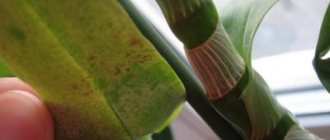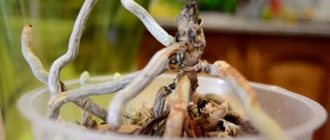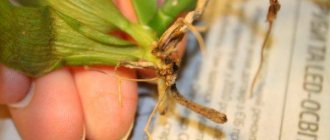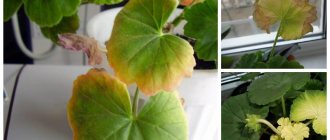Exotic cultures add zest to the interior of any room. Orchids convey an indescribable atmosphere of the tropics. The most popular varieties for home cultivation are dendrobium, phalaenopsis, paphiopedilum, and cattleya. There are a lot of nuances in caring for capricious exotics. The most common flower problem is yellowing of the leaf blade. The question of why orchid leaves turn yellow is asked by both beginners and professionals in the flower business. Next, we will consider the causes and methods of eliminating yellowing.
Orchid description, photo
An orchid during its flowering period stuns with its beauty and aesthetic appearance. In addition, there are varieties that have a pleasant aroma. The variety of shapes and colors amazes with splendor and luxury. This plant represents one of the largest families of flower crops. According to various sources, the family has 17-30 thousand varieties.
The distribution area of the culture covers the territory from the Arctic to the tropics. The greatest concentration of plants is observed in Asia, New Guinea, Central and North America. Flowers grow in moist forests in mountainous areas. Only certain varieties prefer the dry and hot climate of savannas.
This culture is diverse in shape, size and lifestyle. Representatives include lianas, terrestrial plants and epiphytes. Domesticated varieties are often epiphytic or epilithic crops. The bushes have an aerial root system covered with spongy matter made from dead, oxygen-filled cells. They absorb life-giving moisture and air. Some species have green roots that contain chlorophyll and are capable of photosynthesis.
blooming orchid at home
Most epiphytic varieties have a swollen, thickened stem - a bulb (tuberidium). It is able to accumulate nutritional components during the rainy season, and with the onset of the dry season, it feeds the flower with the collected reserves. Terrestrial representatives accumulate reserves in roots or underground tuberidia.
The orchid flower deserves special attention. Depending on the species, the buds surprise with a riot of colors and shapes. 419 varieties are cultivated in Russia. Recently, breeders have developed many hybrids adapted for breeding in greenhouses and apartments. However, the flower retains its natural needs at the genetic level. Therefore, it is important to create the most natural climatic conditions for growing orchids at home.
Informative! In the wild, orchids can live up to 100 years, and at home about 30 years.
How to revive a plant?
Yellow leaves give a signal that they are not receiving food . And the reasons can be very diverse. In some orchid species this is a natural process of shedding foliage, but more often when grown at home, the cause of yellowing of the bulk of the foliage means the presence of a disease.
Important! It is premature to talk about resuscitation, but treatment is urgently needed.
You need to understand that it will not be possible to return the sheet to its normal state, and even removing the sheet will not help . Most likely, the disease is already present in the stem or rhizome.
Any infection loves moisture, so first the orchid should be thoroughly dried and only then treated with an antifungal or antibacterial drug.
What to do if the upper leaves turn yellow?
The main cause of yellowing of the top leaf or leaves is considered to be:
- Moisture entering the root outlet;
- Leaf axils;
- Growth point;
- Or a regular overflow.
It is necessary to free the plant from the substrate and carefully examine the root collar and roots . Remove damage and treat cut areas. That is, perform a transplant.
What does a white coating on yellowing leaves indicate?
White plaque signals :
- Fungal flora;
- Or the presence of parasites.
White coating on orchid leaves indicates the presence of parasites.
In most cases, this is a sign of either powdery mildew or the presence of a mealybug .
If there was freezing
A wet, slimy and soft plant after freezing cannot be treated . If yellowing occurs on single leaves, then the frostbitten areas are cut off to healthy tissue , and the cut areas are treated with crushed activated carbon. If an entire leaf is damaged, it is removed completely, right down to the stem, and must also be processed.
Further care is no different from usual. You can water the plant with Zircon, and after a couple of weeks treat one leaf at a time with Epin .
Yellowing and cracking of the sheet
In most cases, sheet cracking occurs for mechanical reasons, due to :
- Improper watering;
- Or overfeeding with nitrogen fertilizers.
By adjusting watering and fertilizing, the plant will return to a healthy development phase .
Every gardener, growing exotic plants at home, often encounters problems that baffle him.
Knowledge of the biological characteristics of the plant, recommendations from experienced gardeners and careful attention to tropical orchids will protect you from many mistakes that a gardener makes in relation to indoor pets.
Yellowing of leaves is not such a terrible phenomenon, especially when :
- Preventive measures have been taken;
- Acceptable conditions have been created;
- And proper care is provided.
Why do orchid leaves turn yellow?
Indoor flowers delight their owners with lush and colorful blooms. But sometimes they get sick. A common problem is yellowing and wilting of foliage. Any negative changes in the appearance of a flower are a bad signal. Dry foliage is dangerous because the nuisance can affect the condition of neighboring crops. Many people do not take into account changes in the color of the foliage and, as a result, the disease or unfavorable living conditions continue to destroy the bush, and time for rehabilitation will be lost. There may be several reasons for this phenomenon.
Natural causes
It is not always worth raising the alarm when the color of greenery changes. The leaf may turn yellow due to the natural aging process. This change in greenery occurs in each variety. In hybrids (for example, phalaenopsis), the lower leaf always dries out. Rarely does a pair of shoots turn yellow. In the Dendrobium nobile variety, the bush can completely shed its greenery, both during the flowering period and after.
Age also affects greens - it is extremely rare for greens to retain their original appearance for a long time. Annual renewal of shoots during the flowering period and during the dormant stage is the norm for this species and has a certain frequency:
- once a year;
- Twice a year;
- once every 5 years.
Also, the cause of color loss can be the wrong neighborhood. It is not recommended to grow plants such as araucaria, cordyline, yucca, and peperomia in close proximity. With proper maintenance, gardeners rarely have problems with orchids. However, if any requirements are violated, the flower immediately reacts by changing its shade or slowing down its growth.
Improper care
The main and most common reason why a leaf begins to turn yellow is improper watering. Excess, as well as lack of moisture, leads to metabolic disorders. Beginners in floriculture often overwater a delicate plant. The harm from such actions consists of dense soil that does not allow air to pass through, the process of rotting roots and the attachment of pathogenic bacteria. Experienced gardeners recommend focusing on the middle layers of soil when watering. The upper crust dries out quite quickly and misleads beginners.
Orchid leaves turn yellow due to improper care
If an indoor flower grows in a transparent container, then there will be no problems determining soil moisture. When using opaque pots, you can use a wooden stick (if it becomes wet when placed in the ground, then it is too early to water).
For your information! You can determine the dryness of the substrate by weight - wet soil is always heavier.
Poor quality or incorrectly selected substrate for a particular species can cause greenery to wither. Dense, non-breathing soil is also a factor in yellowing and wilting. Lack of air circulation and soil compaction provokes stagnation of moisture and the development of fungal infection. Greenery is the first to react to changes and signals the owner about a problem.
Timely replacement of the soil, the correct mixture for each type of orchid and the correct location of the pot guarantees getting rid of possible deviations in the development of the crop. The influence of direct sunlight and the presence of pots near heating devices leads to overheating of the root system and excessive evaporation of moisture from the soil.
The temperature of rhizomes and shoots becomes different, which causes a stop in the circulation of nutrients. The consequence of such changes is a change in the color of the greenery and loss of turgor. The situation can be corrected by timely moving the container with the flower to a more suitable place.
As you know, foliage is involved in photosynthesis processes, so lack of lighting has a detrimental effect on the development phases. Too much light is also harmful to the bush. The crop needs periods of rest (sleep), and using improper additional lighting can cause the plant to overheat. For proper development, orchids require 10-12 hours of daylight.
a yellow spot on an orchid leaf is the result of sunburn
Interesting! The use of phytolamps will help provide the crop with the necessary quantity and quality of light throughout the year.
What are the reasons?
The main reason for the appearance of yellowness on orchid leaves is a violation of the rules of plant care. The most common causes of yellowing leaves include:
- Bad light. This plant needs bright lighting, but the light should be diffused. If the orchid's leaves begin to turn yellow on only one side or yellow spots appear on the leaves, this means that the plant has received sunburn. If all the leaves turn yellow and become limp, this means that the plant, on the contrary, does not have enough light.
- Incorrect watering. This beautiful flower loves regular watering. But sometimes, if this condition is met, you may notice that the foliage begins to turn a little yellow. This means that the plant has been flooded. This happens when the pot for the plant is too small, and the excess moisture simply does not have time to escape. Also, the cause of yellowing of the leaves may be a violation of the level of air humidity in winter.
- Bacterial or fungal infection. If a flower is affected by this disease, yellowness is visible not only on all leaves, but also on the stem. Another sign of this disease is the high rate of spread of yellowness. In such a situation, it is almost impossible to save the plant.
- Violation of transplant rules. If the flower is not replanted in time, the overgrown measles system no longer fits in the pot and becomes deformed, and yellow spots appear on the leaves.
- Potassium deficiency. This leads to the fact that a biochemical process begins to occur in the plant, including the redistribution of potassium from old tissues to new ones, as a result of which mature leaves turn yellow and die.
- Lack of iron in the soil substrate. This can be caused either by an initially incorrectly selected soil mixture when planting the plant, or by watering with low-quality tap water.
- Lack of nitrogen in the substrate. In this case, the leaves turn yellow but do not fall off.
- Chemical burn. This happens when the soil is fertilized excessively, when a concentrate that is too saturated is used when watering.
- Unscrupulous seller. As you know, the larger the specimen, the more expensive its price. Therefore, many sellers use various stimulants to accelerate plant growth. Therefore, situations sometimes arise when, 1-2 years after purchase, the leaves turn yellow at the base, stop growing and fall off. This is a sign that the seller has gone too far with stimulants.
Leaves turn yellow after transplanting
A freshly purchased plant must be replanted at the end of flowering or a year after purchase. Sometimes a transplant needs to be carried out earlier than the specified dates. For example, if the rhizomes of the flower filled the entire space of the pot and began to climb out, or the substrate stratified ahead of time. After a change of residence, the shoots may begin to turn yellow. Such consequences may indicate that the soil or pot size is incorrectly selected, or that the flower is not cared for properly.
Before you start transplanting any type of exotic flower, you should study the relevant information or seek advice from experts. This culture is very delicate and vulnerable and all manipulations with it should be carried out with extreme caution.
During the transplantation process, it is necessary to pay attention to the condition of the plant roots. If dry, rotten or injured roots are found, they must be removed. Otherwise, the bush will die due to progress in rotting or drying out of the roots. In order to avoid making disastrous mistakes, the transplantation procedure should be carried out according to the clear recommendations of experienced gardeners.
Lighting problems
If you think that since Phalaenopsis comes from southern countries, they need a lot of sun, then you are deeply mistaken. They hide from the sun's rays under the canopy of trees. Therefore, if you place an orchid on a southern windowsill in spring or summer, its leaves will turn yellow or brown spots will appear on them - sunburn.
What to do? Provide Phalaenopsis with good lighting, but without scorching sun. In this case, the yellow leaves do not need to be picked off. Over time, they will turn brown, dry out and fly off on their own.
The leaves will begin to fade and begin to turn yellow over time if the flower is pushed into a dark corner for a long time. The flower also reacts negatively to lack of lighting.
Leaves wither and turn yellow
The shoots begin to wither and change color with loss of turgor. Healthy shoots are thin, smooth, with a brightly colored bud. Softening of turgor is a certain indicator of foliage health, which subsequently leads to yellowness. There are many reasons for this condition. The main ones are improper care and atypical living conditions. A particularly common mistake in care is indiscriminate watering and violation of air humidity.
If the greenery of an adult bush turns yellow only once, then nothing needs to be done. This is a natural process of cultural growth. However, when yellowness causes concern, the cause of the disease should initially be identified. To do this, information about a specific variety is studied in detail, and the required growing conditions are created.
yellow orchid leaves
If most of the greenery suffers, the plant needs help. In some cases, it is advisable to abandon flowering and transplant the bush into a fresh substrate, treating the rhizomes from diseases and damage. Yellowness indicates a lack of adequate nutrition in the leaf.
In such situations, it should be understood that the damaged process can no longer be restored. Removal also will not always eliminate the disease. Often the problem lies in the stems or rhizome. Any infectious disease loves a humid environment. In this regard, the soil should initially be dried and then treated with antibacterial and antifungal agents.
Remember! Improper watering accounts for 80% of all possible problems with growing orchids.
Excess fertilizer also leads to wilting and falling leaves. It is important to select the right nutritional complexes and strictly follow the manufacturers’ recommendations when applying fertilizers. Abuse of growth stimulants and nitrogen fertilizers provokes an acceleration of the growth and aging processes of the bush. Consequently, the replacement of old shoots with new ones occurs faster. After all, the plant is under the influence of artificial drugs, therefore it sheds its leaves faster.
Diseases and pests
When harmful insects appear on the plant, it begins to wilt . Because pests most often feed on sap and cause damage.
Due to pests, the orchid's leaves may turn yellow.
Therefore, you need to inspect your flowers once a week and, if insects are found, carry out appropriate treatment. Without treatment, the orchid disappears.
Preventive measures against diseases
The most important prevention is considered to be the correct mode of flower cultivation . If you follow all the rules of lighting, watering and fertilizing, the flower will not be infected.
The tips of the leaves of the dendrobium orchid turn yellow
Yellowing of the tips of the shoots is not observed so often. This color change is observed when there is an excess of sunlight or calcium in the substrate. If you do not make adjustments to the crop's nutrition and do not adjust the lighting, over time the entire shoot becomes yellow. Dendrobium is very susceptible to both lack of nutrition and an excess of microelements in the soil. It is extremely dangerous to overfeed a flower at an early stage of development.
The crop is mainly purchased in flower shops, where sellers, in order to prolong bright and dense flowering, saturate the substrate with various growth stimulants and fertilizers. After a couple of years of such existence, such bushes become depleted and die. In this regard, it is not recommended to feed a freshly purchased plant. And after maintaining the quarantine period, it is worth replanting the new flower into a fresh substrate and a new container.
Recently, an equally common problem why a leaf changes its color is the excess amount of calcium in the substrate. This is caused by soil salinity, which prevents the crop from absorbing iron. In this case, the system of supply of mineral components is completely disrupted. The shoots become dull, the tips turn yellow and curl. The edges of the platinum become torn. Young shoots react especially strongly to this. In such a situation, it is necessary to save the flower - urgently replant it by washing the roots under running water.
Advice! Until the bush is completely restored, it is recommended to exclude any additional feeding with calcium-containing complexes.
Low air humidity also causes the edges of the sheet platinum to dry out. It is important to remember that the natural climate of orchids is famous for high air humidity, and the dry climate of an apartment will destroy the delicate plant. In rooms with dry air, the crop always begins to dry out from the tips of the leaves. Using a humidifier or irrigating the bush with a spray bottle will help restore vitality and attractive appearance to the plant.
Too much sun is not always good
The vast majority of orchids love good lighting. It should be bright, but diffused. Orchids tolerate direct sunlight only in winter. In summer they need to be shaded, especially on eastern or southern windows.
Flowers growing on these windows will overheat and get sunburned. Burnt orchid leaves turn yellow and dry out quickly. It is necessary to change the location of the flower, or you can protect it from direct sunlight by covering the glass with white paper. There is no need to cut off the burned sheet. The viable leaf will be restored, and the overdried leaf will fall off on its own. The plant will cope with this on its own.
The lower leaves of the phalaenopsis orchid turn yellow
If only the lower leaf turns yellow, then there is no need to rush into treatment. The leaf will dry out and fall off on its own without causing harm to the plant. This is a consequence of the natural processes of growth and renewal of greenery. By cutting or tearing off such a process, you can cause injury to a delicate exotic plant.
The lower leaves of the orchid have turned yellow
Improper care also affects young shoots. An externally healthy plant may change the color of its shoots. The reason may be the chosen method of moistening the soil. When watering from a watering can, the bark is poorly moistened, because all the moisture quickly leaves the pot through the drainage, without having time to nourish the roots. It is recommended to use the submersible irrigation method. A couple of weeks after changing the watering regime, the flower will return to normal.
Insufficient watering as one of the main mistakes in care
A very common reason for orchid leaves changing color from green to yellow is insufficient watering. Why do orchid leaves turn yellow due to the substrate drying out? Moisture deficiency disrupts metabolism, slowing down the flow of nutrition to the stems and leaves. The reaction of the flower in this case will be the appearance of unhealthy coloring of the leaves. This happens only in the most advanced cases.
For example, phalaenopsis. An unpretentious, common orchid. In an externally healthy plant with normal roots, the leaves acquire a yellowish tint. This situation is possible even with timely watering. The reason for the lack of moisture in orchids lies in the structure of the planting soil. The orchid planting mixture most often consists of pieces of coniferous tree bark.
Irrigation water, flowing through the substrate, flows into the pan, preventing the roots from being saturated with moisture. Young leaves do not have enough nutrients and phalaenopsis has to redistribute nutrients from older leaves to young ones. Old orchid leaves turn yellow. In this case, eliminating such yellowing is very simple.
It is enough to water the orchid using the immersion method. A pot of phalaenopsis is immersed in a container of water. Dive time is individual. Through the transparent walls of the pot you can see when the orchid's roots turn from gray to greenish. This will be a signal that the roots have received enough moisture. If you switch to such an irrigation system, in one to two weeks the water balance of the flower is restored, and the yellowing of the leaves stops.
Leaves turn yellow at the base
The leaf can turn yellow not only if care standards are not followed, but also depending on the type of orchid. In Dendrobium, for example, at the end of flowering, the stem and shoots completely die off. But after a couple of days, new young shoots grow in its place. In Falik, yellowing is observed due to frostbite, loss of growth points, compaction of the substrate, etc. This is not a natural process, so the cause should be found out and treatment should begin as soon as possible. The base of the leaf begins to die off when the disease is advanced or the plant maintenance standards are violated.
the leaf at the base of the orchid turns yellow
Yellowing of the leaves at the base may indicate rotting or drying out of the root system. And such a problem requires urgent resolution. The presence of a fungal infection can lead to rotting of the rhizomes. Then the orchid must be urgently replanted and the roots treated with fungicides. Drying of roots is often associated with a lack of moisture due to compaction of the substrate. All problems associated with changes in the root system require urgent and immediate solutions.
Also, a change in color in the middle of the bush may indicate insufficient daylight hours. The process of photosynthesis plays an important role in the development of the plant, therefore, in the absence of light, the flower becomes weak and unviable. The greenery wilts in the middle - these are the places where the least amount of sunlight gets. To eliminate the problem, it will be enough to move the pot to a more illuminated room or provide additional lighting.
Important! If the plant is in the active growth phase, then any movement of the pot should be avoided and the location of the crop should be changed.
.
Drafts and cold
There is no need to place orchids on a windowsill or next to a window where the window will open during the cold season. In winter, check if there is a draft from the window and if the pot is cold?
You will be interested to know: Why small zucchini turn yellow and rot in the garden: reasons and what to do
The low temperature of the substrate in which the flower grows can cause yellow leaves. After some time, the roots of Phalaenopsis will begin to rot and the leaves will fall off. Therefore, if it is cold on the windowsill in winter, place a flower pot in the room.
If the roots are still rotten, carry out the same procedure as when overmoistening the soil.
The leaves of a blooming orchid turn yellow
During the flowering period, a problem with yellow leaves can arise if the conditions of the crop are violated. Some species completely shed all their greenery during the flowering period. This is a normal natural process, so there is no cause for concern. In other cases, if a flowering bush loses its greenery, it is important to determine the cause of this phenomenon. Please pay attention to:
- irrigation regime;
- quality and quantity of lighting;
- water indicators;
- fertilizing
The flower sheds its foliage when the shoots turn yellow massively, because there is a significant decrease in nutrition and photosynthesis. Further actions depend on the severity of the disease. If the plant is kept in the right conditions and there is no presence of infection, the yellowness of individual shoots does not have a negative effect on the crop as a whole.
If the reason lies in other problems, then at the same time as the shoot changes color, the bush sheds its buds. With a weakened root system, the greens begin to wither immediately after flowering. Additionally, a lack of moisture in the roots leads to yellowness, because the rhizomes begin to draw life-giving nutrition from the shoots, which leads to a change in color.
It is extremely important to organize proper care after flowering. Maintain the required temperature and watering conditions. And also carry out proper pruning of the shoots. After the first couple of flowerings, the flower should be transplanted into a new large container with fresh nutrient substrate.
Pest Control
Your achievements in growing orchids can also be seriously harmed by living creatures. Not just diseases.
Scientists and experts estimate that they know about 32 types of orchid pests. They harm not only these flowers. And others too. Most likely it could be:
- Spider mite. Slightly noticeable white dots on the bottom of the leaves. And a cobweb.
- Thrips. Very small insects. Excrement (dark spots) and silvery leaves.
- Aphid. It is more well-known and visible: Regular inspections of your plants will help you detect them in a timely manner and take action;
- Wiping the leaves with a soapy solution will help get rid of aphids;
- To eliminate ticks and thrips, you will have to use special preparations : Vermitek;
- Aktofit;
- Fitoverm;
- It is possible that the plant will need to be replanted. To change the soil to a quality one.
What to do with yellowed leaves
The yellow sheet is not removed until it is completely dry. The sprout, which has not yet dried out, continues to nourish the plant. During the natural process of changing greenery, the flower itself sheds its dried leaves. If only part of the plate has changed color, then the bush will be able to provide the healthy half with nutrients.
If yellowness appears under the influence of fungal and infectious diseases, they initially try to revive the crop by treating the bush with special preparations and replanting, without removing the injured shoots.
orchid leaf turned yellow infectious disease
You can also remove dried shoots during the replanting process. It is with this procedure that there is an excellent opportunity to remove all damaged and injured parts of the plant. If you replant the crop early, then an important condition for removal is checking the drying phase. The sheet is removed only after complete drying, and this process may take some time.
Often the foliage of a flower is not cut off, but carefully broken off. The shoot is taken by the base and torn into two halves along the central groove. This procedure must be performed with extreme caution so as not to harm the trunk and root system. In case a fresh wound has formed on the stem after the fall, this area should be treated with crushed coal. The correct procedure for removing a sheet can be seen in the video.
Recommendation! After removing the shoots, it is better to refrain from watering for 2-3 days.
If the bush has suffered from a pest attack or an associated disease, then the crop should be treated. Having diagnosed the exact cause, you can choose an effective way to save the flower.
What is it and what does it look like?
Sometimes, looking at a plant, you will notice that 1-2 lower leaves have turned yellow and are drying out, while the rest still remain richly green and healthy. Why does this happen and what needs to be done to restore the plant to a healthy appearance? In this case, do not panic: a natural process occurs, as a result of which the lower leaves turn yellow and fall off. The orchid sheds its old foliage in this way.
If the leaves of an orchid first lightened, became limp, and then yellow spots began to form on them, or if the leaves began to turn yellow at the base or on one side, and then the stem began to turn black or acquire a yellow or brown color, this is a sign that there were the rules for caring for the plant have been violated or the plant has become ill.
Photo of the affected flower
Here you can see what an orchid with yellowed leaves looks like:
Typical diseases of orchids
Diseases in orchids can be fungal, bacterial or viral. The orchid can also be attacked by insect pests.
Orchids are susceptible to fungal diseases
Most often, orchids are susceptible to fungal diseases, which, if not treated promptly, can lead to the death of the plant. Less commonly, bacteria enter the flower, penetrating into damaged parts of the leaf.
Viruses manifest themselves in various “patterned” spots and circles on the leaves of the plant. Unfortunately, they cannot be cured quickly; the affected orchid will have to be disposed of as soon as possible. Determination of the exact type of viral infection is determined only by laboratory testing. In this case, the flower poses a threat of infection.
Table: orchid diseases
| Diseases | Type of disease |
| Fusarium rot | fungal |
| Anthracnose | fungal |
| Leaf spot | bacterial |
| Brown bacterial spot | bacterial |
| Gray rot | fungal |
| Root rot | fungal |
| Black rot | fungal |
| Rust | fungal |
| Viral spots | viral |











